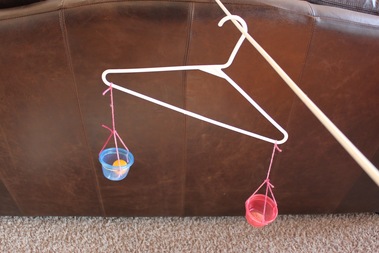I have a feeling Ramona Quimby grew up to be a scientist. Here are a couple of reasons why:
If Ramona drank lemonade through a straw, she blew into the straw as hard as she could to see what would happen.
“Ramona, what did you have to go and do a thing like that for?” Beezus demanded of her little sister, who was playing with her doll Bendix.
“To see what would happen,” answered Ramona.
[After Ramona drops all the eggs, shells and all, into the cake batter and starts the mixer.]
Ramona knows that she doesn’t just have brown eyes, that she really has brown and white eyes. She likes lizards, even imaginary ones like Ralph. She pretends to weigh herself at the grocery store (and proclaims that she weighs “fifty-eleven pounds.”)
In Ramona’s spirit of science and curiosity, we’re going to learn about weight and mass today. What’s the difference?
Mass is how much matter is in an object. You’ll have the same amount of mass wherever you go or whatever you’re doing. It changes a little any time matter goes in or out of your body–when you eat or go to the bathroom, and even a tiny bit when you breathe in and out. Because air and gas have mass too! If you measure with grams or kilograms, you’re measuring mass.
Weight (often measured in pounds, but usually not “fifty-eleven pounds”) is how much gravity is pulling on an object. It’s related to mass, but they’re not exactly the same. The more mass you have, the more you’ll weigh, because gravity will pull on you more. But if you went someplace with less gravity, like the moon, your weight would change even though your mass stayed the same! You can find a fun weight calculator here that tells you your weight on the moon and many other planets. Try to predict before you put the number in–where would you weigh the most? Where do you think you’d weigh the least?
Now for the activity. You can make a balance easily by stringing two cups to each ends of a hanger. Put the hanger over a string or dowel, then start measuring! Use a small object like a paper clip as a unit of measure (paper clips actually have a mass of about 1 g) to find approximate masses of things like ping pong balls and pebbles. (This is a good one to demonstrate that greater volume doesn’t always equal greater mass.) Gravity will pull harder on whichever side has the greater mass and the greater weight.
Have fun measuring weight and mass!
